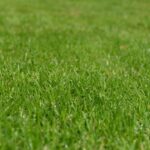Steven Haynes, sales manager for TYM at Reesink Turfcare offers advice on what to look out for when purchasing a compact tractor

When buying a tractor, it’s worth factoring in a number of things. First consider your current needs and how they might they change in the next few years. Is there a possibility that you may need to use larger attachments or perhaps work in tougher conditions in the foreseeable future? This will help you decide whether you would be better ‘hedging your bets’ and buying a tractor with slightly more horsepower than you currently need rather than opting for something that’s right on its limit for your current needs.
You may also have other restrictions that need to be taken into account, are you restricted on storage space? Do you have weight restrictions on towing or have narrow access sites to deal with? Equally height may be an issue, do you work in areas with trees and low hanging branches? Perhaps the tractor is stored in a limited height shed for example. This height restriction may limit or negate your need for a cabbed tractor, but be overcome with an open station tractor with a folding ROPS. Tractors come in all sorts of different frame sizes and working out the size that is right for you is key to any purchase.
Choosing a machine fit for purpose
What do you need your tractor for? Are you looking for something that can manage a range of landscape environments, or do you require a machine that is specifically for one job. Do you need a front loader that can be fitted with a number of attachements or is the machine’s turning radius of more importance.
The TYM range for example has a tractor for almost all needs in the fine turf, sports field and landscaping environments.
In the compact range the TS25 has the smallest horsepower, ocan easily manage a front loader that can be fitted with a range of attachments, such as the mid-mount mower and is well suited for smaller jobs around a golf course. The T293 although slightly bigger is still a versatile machine, ideal for many applications for private estates to sports turf environments, in particular. The T353 has an excellent turning radius and offers maximum traction. Its ability to be able to switch from one task to another or from one operator to another means this model is ideal for estate management or equestrian work.
In the mid-duty range the T503 is powered by a four-cylinder Perkins diesel engine and available with either a 16F/16R manual or a three-range hydrostatic transmission bringing economy and power to most landscaping jobs. The heavy-duty T754 is suitable for a wide range of markets, local authorities, groundscare and landscaping to schools, colleges and small holdings, with its solid chassis and a spacious, fully air-conditioned cabin, ensuring all-round comfort for operating in all conditions.

Comparing specifications
Take your time when comparing each manufacturers’ specifications on a tractor, as although on paper it may look like one tractor is the same as another, small differences that can be overlooked.
Horsepower is a good example of this. In some manufacturers’ specifications they may list engine horsepower as either a nett or gross figure and the two are different. Gross horsepower is measure on an engine that has nothing attached to it. No alternator, no cooling system, no air cleaner etc. So the horsepower will always appear very high in this instance. Whereas nett horsepower looks at what power would be delivered with these engine related accessories fitted but does not go so far as having a transmission attached. Sometimes a better alternative is to look at the Horsepower at the PTO (power take off) figure as this is what you can actually achieve in the real world with all areas of horsepower drain taken into account.
Another key specification to look at is lift capacity. Some manufacturers list lift capacity at the ball ends and this is okay if the attachment you are using is a narrow or close coupled one with the weight of the attachment above the ball ends. However, more often than not most attachments are not designed this way and the heaviest part of the attachment may be further behind the lift arms and away from the tractor. A turf aerator is a great example of this with tines and heavy rear rollers being set back in the machine away from the attachment point. A more accurate lift capacity to work to is one that is measured at 24 inches behind the ball ends. It’s worth taking time to look at this as the two figures are very different and you may end up with a tractor that might struggle to lift some attachments.
Tyre types
Most landscapers will opt for turf or industrial tyres with the latter being a good option for anyone doing any significant work on hard surfaces such as roads and gravel paths. This is because industrial tyres provide good levels of grip and produce a better ride than agricultural tyre, especially when traveling at speed on a road.
Turf tyres will obviously excel on grassy areas and produce less damage to the turf than an agriculture or industrial option. In additional to a standard turf tyre, you may also want to consider a wide turf tyre, which are sometimes referred to Galaxy tyre. Although these are not as popular as a standard tyre, the wider profile produces a very low ground pressure and as a result are a great option for sports pitches or for work in other areas where compaction is a concern. The downside to this tyre is that they have a very shallow tread pattern so grip levels are lower than any other tyre option.
TYM offer a range of tyres which are designed for a multitude of different applications.
Transmission
Generally speaking, there are two main transmission options when it comes to compact tractors, either a manual gearbox or a hydrostatic transmission. The hydrostatic transmission (HST) is as close as you can get to an automatic transmission as changes in direction and increases in speed can be done via a single pedal and there’s no need for a clutch pedal. It is a good option for either less experienced operators or those that are used to using ride on mowers.
The HST transmission is good for jobs that require frequent direction changes such as loader work or when working in small spaces or areas with numerous obstacles. The fact that the operator can go from forward to reverse without changing gear or using the clutch makes for an easier time for the operator and means there’s significantly less wear on a clutch disc.
A manual transmission is generally the preferred option for people who want a lower cost tractor as this transmission is cheaper to produce or will be using the tractor to carry out a lot of fixed speed tasks such as spraying or aeration. The operator can simply select a suitable forward gear and engine speed, and then tractor will run consistently at this speed and deliver consistent results.

